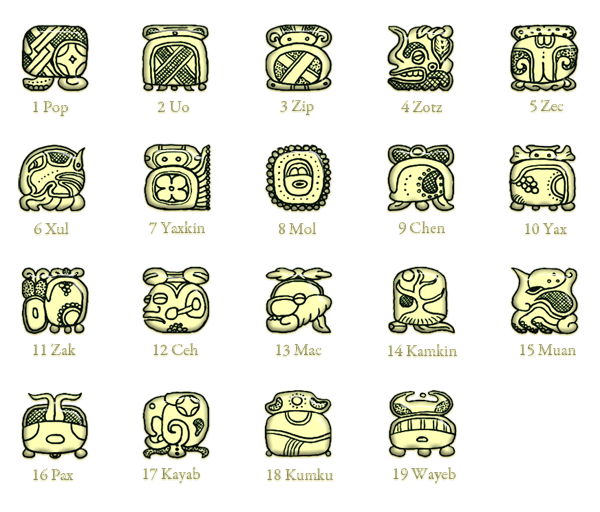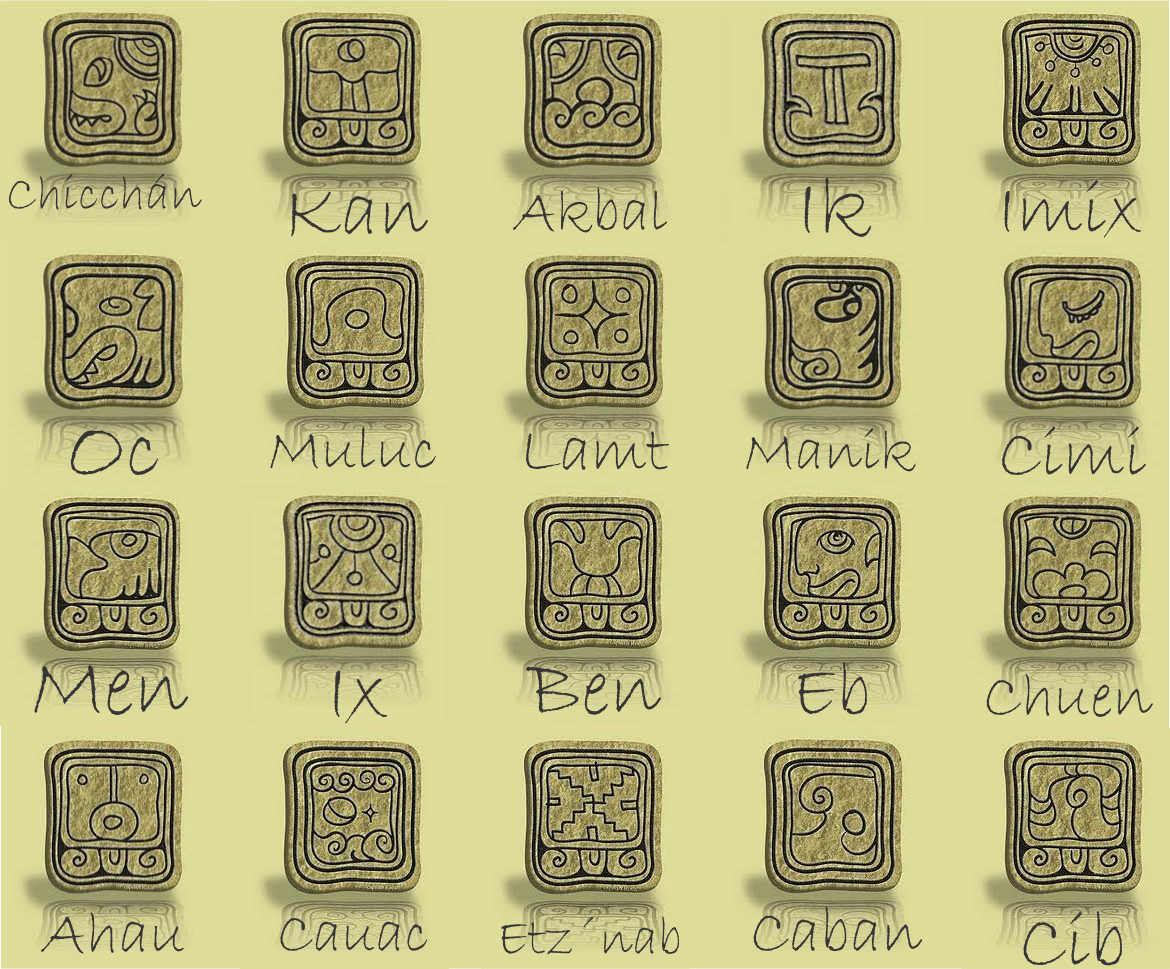


Haab– The solar year of 365 days is divided into 18 twenty day periods that are similar to months. Each day has its own sign and meaning. At the end of each year are 5 extra days (19th) called Uayeb, which acquired a very derogatory reputation for bad luck; known as “days without names” and were observed as days of prayer and mourning. Fires were extinguished and the population refrained from eating hot food.

Tzolkin – A 260 day calendar is divided into the twenty day names that follow a sequence of 13 numbers. Click on the image to read the meaning of each day sign. Because the tzolkin is comprised of twenty days but only thirteen numbers, the cycle of days and numbers will soon set up an interlocking rhythm of their own design. Beginning with 1 Imix, the days will proceed in order until 13 Ben. Then will come 1 Ix, 2 Men, 3 Cib, and so on until 13Cimi, which is followed by 1 Manik. After 260 days, 13 Ahau will arrive, after which the whole cycle of 260 days begins again with 1 Imix. This cycle repeats eternally giving added meaning to a day sign.
The Year – Solar years are grouped in 52 year cycles and each has a special quality.
Lords of the Night – A repeating sequence of 9 days named for the gods of the underworld.
Venus – The cycle of Venus is divided into 4 - reflecting periods in which it is the Day Star (rising before the sun) Evening Star (visible at sunset) and showing Inferior and Superior Conjunctions with the Sun.
This interlocking movement can be imagined like gears and shows the Mayan calendar to be a cycle within cycles. READ MORE